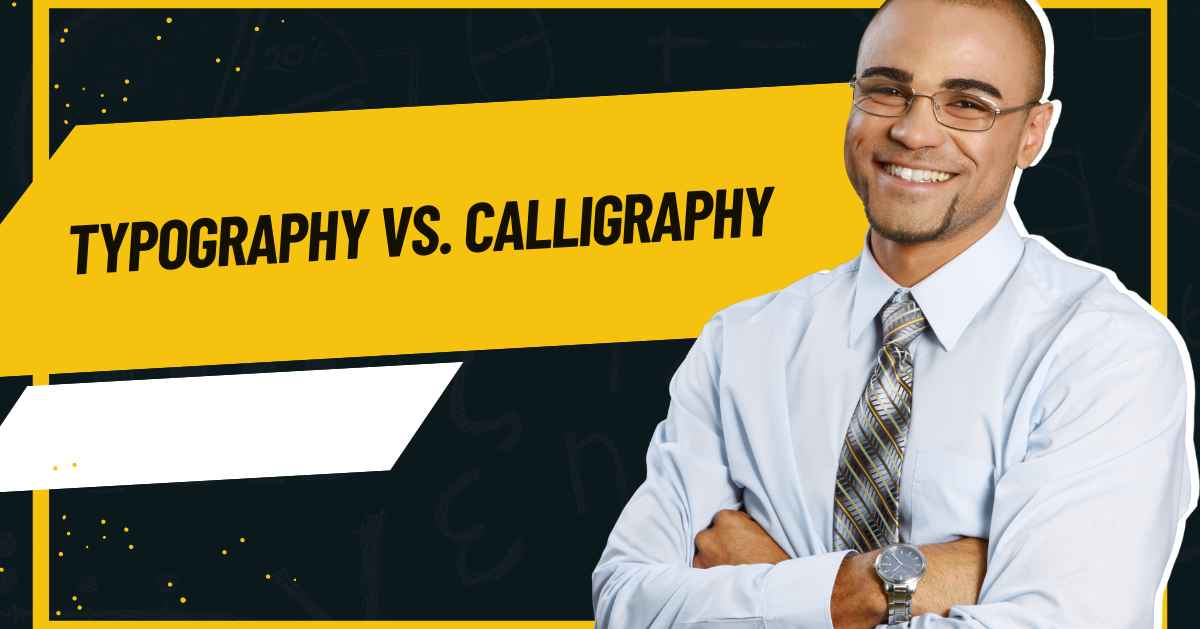Understanding Differences Between Typography and Lettering

Have you ever wondered about the distinction between type and lettering? In design, they appear similar but serve unique purposes and require distinct skills. This guide explores the key differences, from the fluidity of handwritten calligraphy to the precision of digital fonts, which are essential for every designer and enthusiast to grasp.
What is Lettering?
Lettering is all about designing letters and words by hand. Unlike typography, which focuses on selecting and arranging fonts, lettering allows for creativity and the creation of customized designs. It is commonly used in crafting logos, signage, and book covers to add an element to materials. Artists use brushes, pens, or markers to bring their designs to life. The rise of media has further popularized lettering by infusing a touch into online content. Artists exhibit their creations on platforms like Instagram, attracting clients and admirers. Observing the various styles, from scripts to bold letterforms, is fascinating.
What is Typography?
Arranging and designing text, or typography, makes text visually appealing and readable. This art encompasses selecting fonts, adjusting spacing and organizing the text layout. Typography holds significance in design, advertising, web design and print media as it establishes the tone and effectively conveys messages. For example, fonts can elicit emotions in posters or advertisements. Additionally, maintaining consistency in usage aids in building brand identity and fostering trust among customers.
[Read More: Typography vs. Calligraphy: Understanding the Difference]
Typography vs. Lettering: Modern Design Explained
Typography and lettering play big roles in modern design, but they have different jobs. Let’s compare and contrast them using a table.
| Aspect | Typography | Lettering |
| Definition | The arrangement of typefaces. | Unique letterforms are often created by hand. |
| Medium | Uses pre-designed typefaces. | Involves crafting custom letterforms. |
| Flexibility | Limited to chosen typefaces, offering consistency. | It is ideal for large bodies of text, ensuring readability. |
| Application | Ideal for large bodies of text, ensuring readability. | Suitable for logos, headlines, and designs requiring a distinct touch. |
| Examples | Newspapers, books, and websites. | Logos, signage, and custom invitations. |
| Creation Process | Selecting and arranging typefaces cohesively. | Hand-drawing or digitally crafting letterforms, allowing artistic expression. |
| Consistency | Ensures uniformity in branding and communication. | Provides a unique, handcrafted feel, potentially varying between instances. |
| Scalability | Highly scalable without quality loss. | Scaling may require adjustments to maintain visual integrity. |
| Collaboration | Easily integrates with other design elements. | It requires deliberate integration due to its unique nature. |
| Technology Dependence | Relies on type design software. | Combines traditional and digital tools, depending on the artist’s preference. |
| Accessibility | Generally accessible for various uses. | Custom designs may present accessibility challenges in certain applications. |
| Trends in Modern Design | Embraces minimalism and readability. | Focuses on hand-drawn aesthetics and personalized craftsmanship. |
Type and Lettering: Key Differences Explained
Type: When reading a book or browsing a website, you see the result of designing and organizing text in print or digital form. The fonts used are crafted with precision to ensure readability and aesthetic appeal. They can be adjusted in ways, like size, style and weight, to evoke emotions or convey distinct messages.
Lettering: Creating letters manually is a practice in various visual mediums, such as personalized logos, signage, and elaborate headings found in magazines. Lettering experts use calligraphy, brush lettering or digital illustration to craft aesthetically pleasing letters. In contrast to typefaces, lettering allows artists to express their creativity and personal touch, making it ideal for captivating design projects.
How to Choose Between Typography and Lettering
When deciding whether to use typography or lettering for your project, keep these tips in mind:
Understand the Message and Audience: Consider the message you wish to convey. The audience you are addressing. Typography is ideal for conveying information, whereas lettering imparts a feel. Select your style based on the mood and intention of your design. For example, when creating a poster for a function, typography maintains its appearance. Conversely, for a wedding invitation, lettering introduces a touch of romance.
Evaluate Design Goals: When planning your design, think about your goals. Opt for typography if you value readability, scalability, and a cohesive appearance. However, if you’re after an expressive design, custom lettering can add a touch of style. Take into account the mood and message you wish to communicate. If you’re looking for a polished aesthetic, typography is the way to go. For a playful vibe, consider using lettering.
Review Project Scope and Constraints: Consider the scale and constraints of your project. When facing deadlines or dealing with a large amount of text, typography may be the way to go for efficiency. However, custom-designed lettering could be the choice to add a touch of uniqueness. It’s important to take into account the purpose of your project. Lettering can make a statement if you’re working on logos or branding. On the other hand, websites or publications that require text typography tend to be more practical. Make sure to think about the aesthetic and objectives of your project when deciding between typography and lettering.
Balance Typography and Lettering for Impact: You can combine both elements for an impact. Merge the clear nature of typography with the handmade feel of lettering. Striking a balance results in a visually appealing design. Bringing them together does not enhance aesthetics. It also lets you connect with your target audience in a specialized field. This combination clarifies your communication through typography while infusing character through lettering.
Examine Successful Case Studies: Explore study designs within your industry. Examine how typography and lettering were skillfully employed in projects. Real-life instances illustrate strategies and aid in adhering to industry norms. For example, when creating a tech website, analyse tech platforms to observe their utilization of typography and lettering. This exploration provides insights into your niche’s practices and informs decision-making.
Conclusion
Understanding the variances between typography and lettering is important in creating designs. Typography is ideal for presenting text content, while lettering allows for crafting unique and customized designs particularly suitable for logos and headlines. Knowing how to utilize each appropriately enhances the appeal of your projects!






